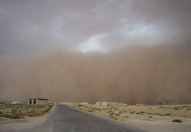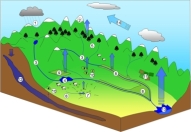Prof. Jason P. Evans
Climate Change Research Centre
University of New South Wales









Natural Hazards in Australia: heatwaves.
Perkins, S.E., C.J. White, L.V. Alexander, D. Argueso, G. Boschat, T. Cowan, J.P. Evans, M. Ekstrom, E.C.J. Oliver, A. Phatak and A. Purich
Greenhouse 2015, Hobart, Australia, 27-30 October 2015. Abstract
Heatwaves have disastrous impacts on many different systems, including human health, infrastructure
and natural ecosystems. Australia is no stranger to these impacts, with over 370 fatalities attributed
to the 2009 Victorian heatwave, and 3500 flying foxes killed when temperatures soared to 42°C
over New South Wales in 2002. Marine heatwaves (prolonged periods of anomalously warm oceans)
also have significant impacts. The infamous ‘Ningaloo Niño’ in 2011 led to a ‘tropicalisation’ of fish
communities and severely damaged the distribution of temperate seaweeds and fish, which may
never fully recover. Recent research efforts have concentrated on furthering our understanding of
both terrestrial and marine heatwaves. However, a comprehensive understanding of these events
also requires a comprehensive understanding of the underpinning physical mechanisms and their
interactions. This presentation reviews the current state of the scientific knowledge of marine and
terrestrial heatwaves, with particular emphasis for the Australian region. Based on this knowledge,
recommendations are given for the concentration of future research, both short and long term, and how
the Australian science community, as well as the global science community, will benefit from this. The
supporting paper for this presentation is part of the OzEWEX special edition on Australian hazards.
|
|